Abstract
In recent years, the cultivation of flowering trees in Japanese agriculture has shown significant growth. As of 2022, the nationwide shipping volume reached a record high of 31.2 million pots, while the harvested area expanded to 29,000 hectares, its largest on record. This reflects a steady upward trend in the demand for potted plants, particularly in urban landscaping and home gardening. In the past, flowering trees were mainly cultivated in rural areas, but recent shifts have seen an increase in cultivation closer to urban centers. This has been driven by the rising popularity of indoor plants and urban greening initiatives.
Shipping volume of orchids (main data).
The shipping volume of flowering trees in Japan has seen significant changes from 1980 to 2022. The peak was recorded in 2001, with 60.1 million pots shipped nationwide. However, as of 2022, this figure has declined to 31.2 million pots, or 51.9% of its peak. This decrease reflects shifts in consumer preferences, urbanization, and changes in landscaping trends. While the early 2000s saw high demand due to outdoor gardening and beautification efforts, recent years have experienced a shift toward smaller, low-maintenance indoor plants. Despite the decline, a growing interest in urban greening and eco-conscious design offers potential for future recovery in shipping volumes.
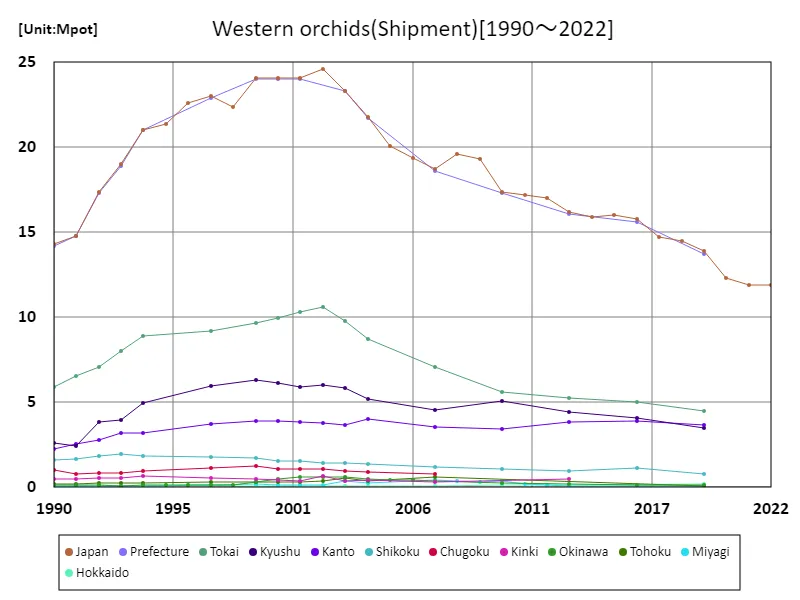

The maximum is 24.6Mpot[2002] of Japan, and the current value is about 48.4%
Shipping volume of orchids (by prefecture).
As of 2019, Aomori Prefecture leads Japan in the shipment of potted plants, with a total of 567,000 pots, marking the highest shipment volume among all prefectures. This highlights Aomori’s strong agricultural focus on potted plant cultivation, likely supported by its favorable climate and infrastructure. The overall trend in potted plant shipments reflects regional variations, with prefectures like Aomori maintaining strong production capacities. Nationwide, however, there has been a general shift toward smaller-scale production, with a focus on indoor and urban gardening trends. The steady demand for ornamental plants in both residential and commercial spaces ensures that potted plants remain a key aspect of Japan’s agricultural output.
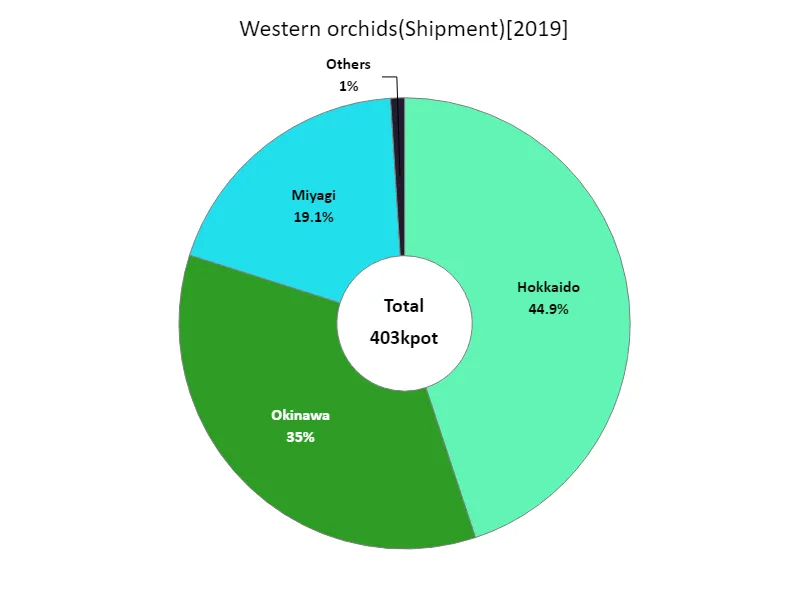

The maximum is 181kpot of Hokkaido, the average is 101kpot, and the total is 403kpot
Harvested area of orchids (main data).
The harvested area of Western orchids, which are a prominent potted plant in Japanese agriculture, fluctuates throughout the data from 1990 to 2022. The national harvested area peaked at 29.2ka in 2003 and has been declining since then. The current harvested area is 57.5% of its peak area. The decline is due to competition from imports and changes in demand. In addition, cultivating orchids requires high levels of skill and effort, and this could be due to the aging of farmers and a lack of successors. At the same time, in order to respond to changes in demand, efforts are being made to improve the quality of Western orchids and create new demand. Although the area harvested for orchids is showing a downward trend, it still maintains a certain size, and cultivation is still thriving in some areas. In the future, changes in demand and technological innovation will require measures to ensure the sustainable growth of the orchid industry.
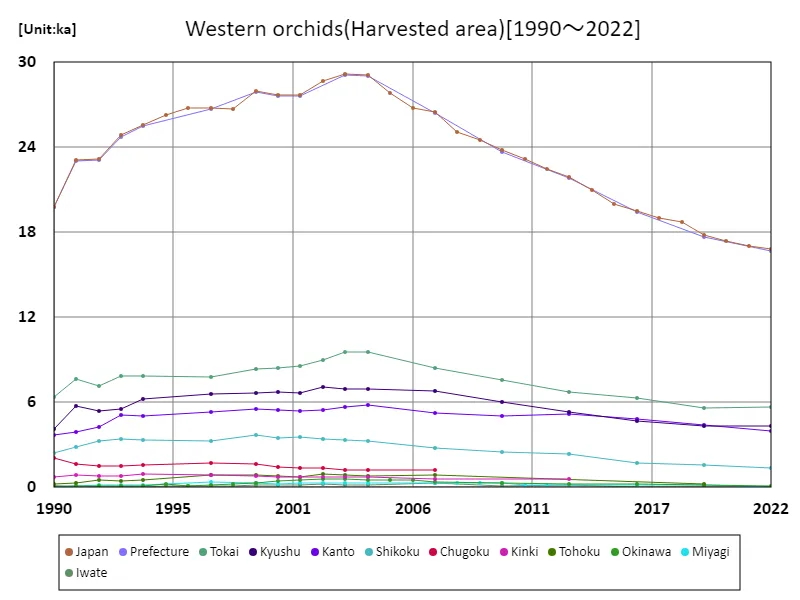

The maximum is 29.2ka[2003] of Japan, and the current value is about 57.5%
Harvested area of orchids (by prefecture).
In the potted crop sector in Japanese agriculture, harvested areas by prefecture are observed based on the latest data from 2022. Among these, Hokkaido has the largest area overall, at 68a. This figure is the highest currently available. Hokkaido has vast land area and suitable climatic conditions, making it ideal for growing potted plants. Hokkaido has also focused on innovating agricultural technology and improving production efficiency, which may be contributing to the increase in harvested area. On the other hand, potted plants are produced in other prefectures as well, but not on the same scale as Hokkaido. This may be due to factors such as the climate and land conditions of each region, as well as the technical level of producers. Overall, data from 2022 reveals that while the harvested area of potted crops has different characteristics depending on the region, Hokkaido boasts the largest harvested area.
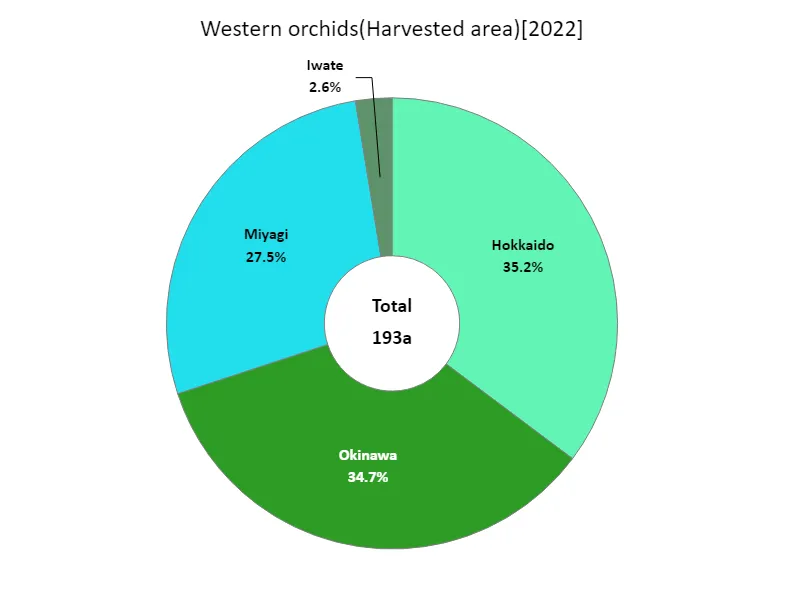

The maximum is 68a of Hokkaido, the average is 48.3a, and the total is 193a
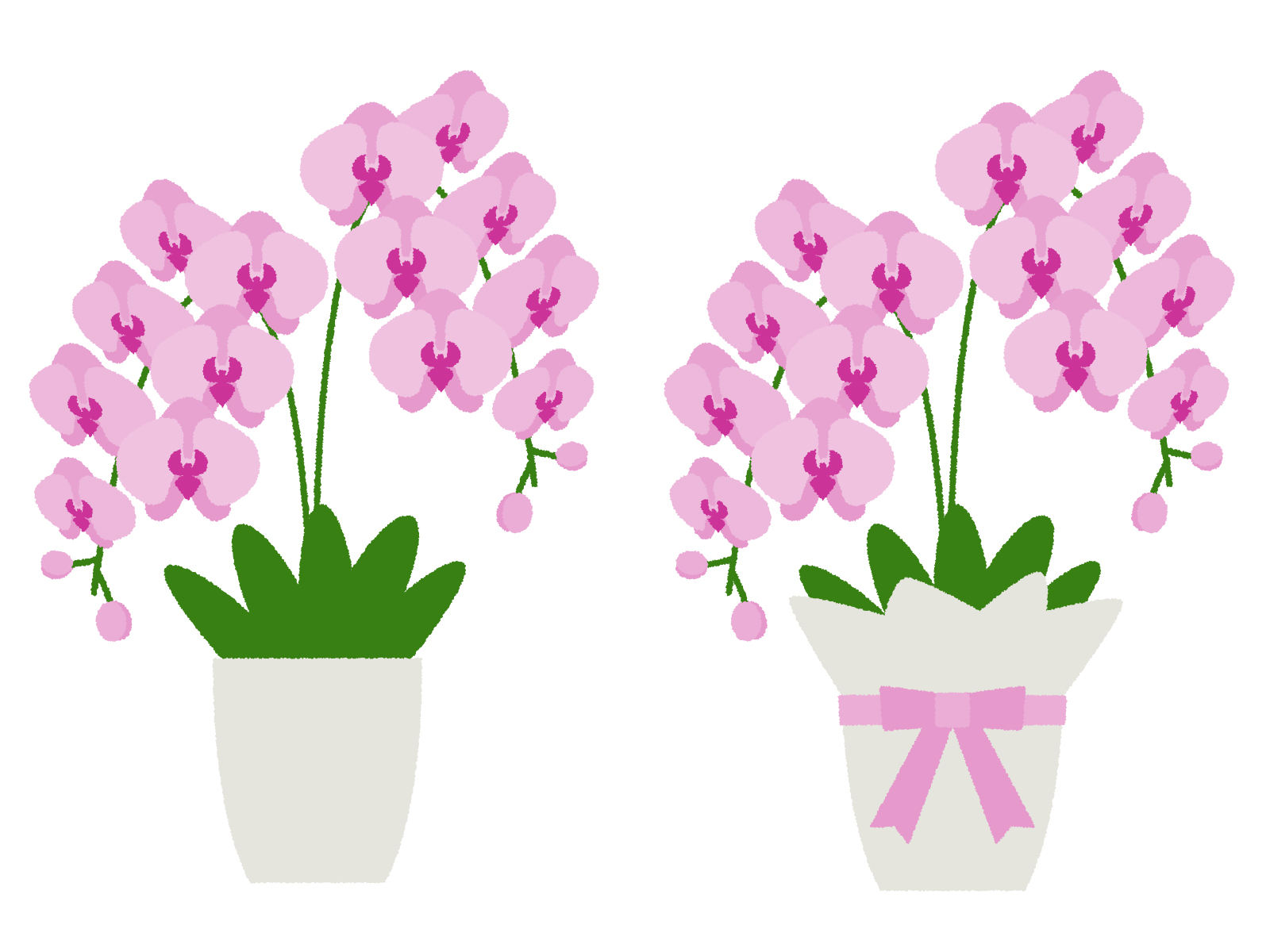


Comments